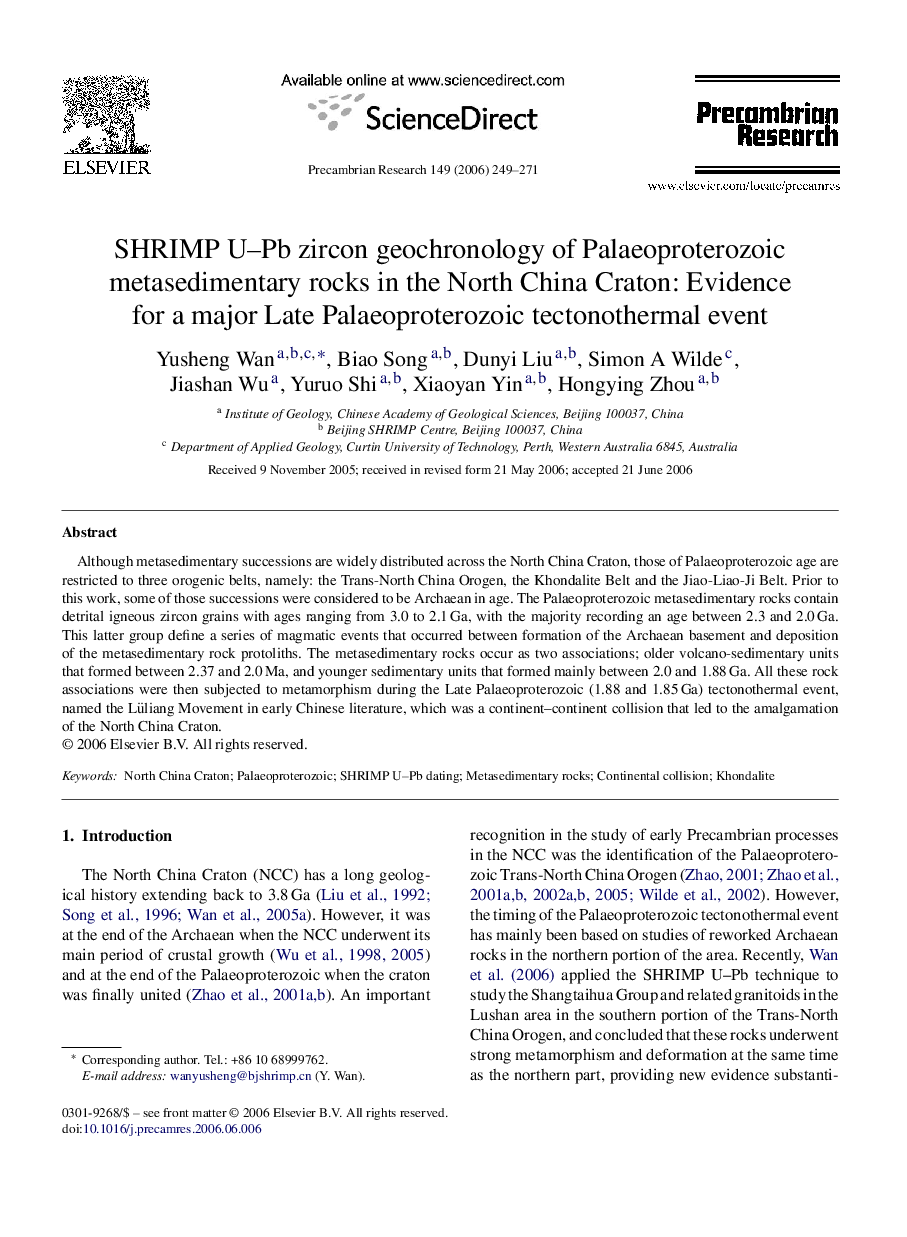| Article ID | Journal | Published Year | Pages | File Type |
|---|---|---|---|---|
| 4724664 | Precambrian Research | 2006 | 23 Pages |
Abstract
Although metasedimentary successions are widely distributed across the North China Craton, those of Palaeoproterozoic age are restricted to three orogenic belts, namely: the Trans-North China Orogen, the Khondalite Belt and the Jiao-Liao-Ji Belt. Prior to this work, some of those successions were considered to be Archaean in age. The Palaeoproterozoic metasedimentary rocks contain detrital igneous zircon grains with ages ranging from 3.0 to 2.1Â Ga, with the majority recording an age between 2.3 and 2.0Â Ga. This latter group define a series of magmatic events that occurred between formation of the Archaean basement and deposition of the metasedimentary rock protoliths. The metasedimentary rocks occur as two associations; older volcano-sedimentary units that formed between 2.37 and 2.0Â Ma, and younger sedimentary units that formed mainly between 2.0 and 1.88Â Ga. All these rock associations were then subjected to metamorphism during the Late Palaeoproterozoic (1.88 and 1.85Â Ga) tectonothermal event, named the Lüliang Movement in early Chinese literature, which was a continent-continent collision that led to the amalgamation of the North China Craton.
Keywords
Related Topics
Physical Sciences and Engineering
Earth and Planetary Sciences
Geochemistry and Petrology
Authors
Yusheng Wan, Biao Song, Dunyi Liu, Simon A Wilde, Jiashan Wu, Yuruo Shi, Xiaoyan Yin, Hongying Zhou,
